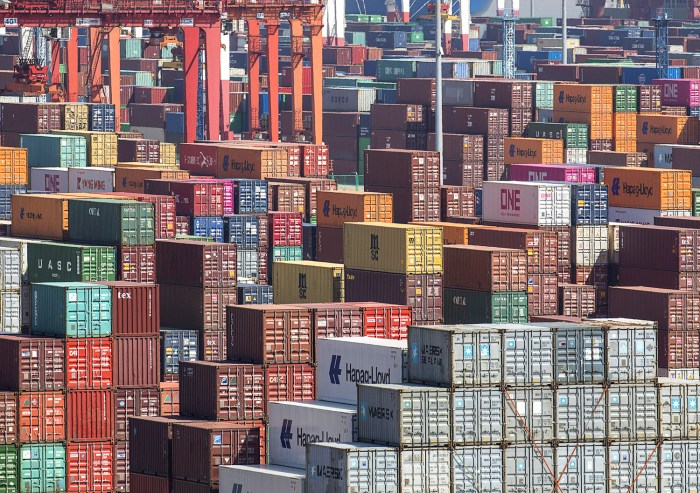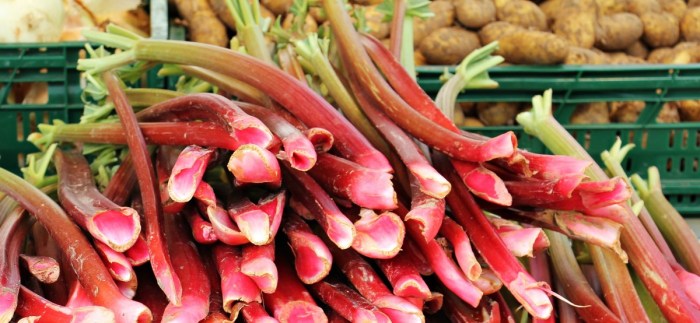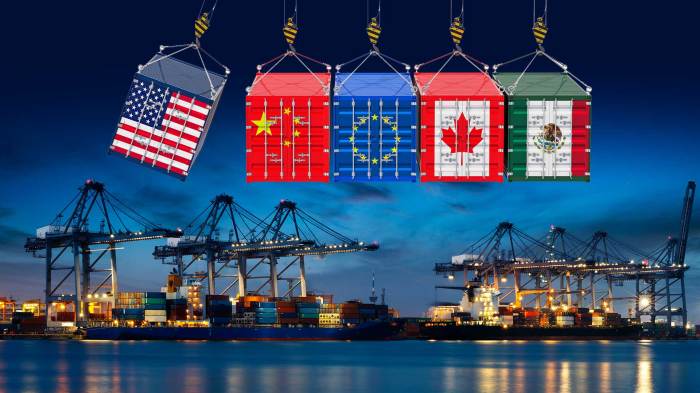
Farmers trade war tariffs have significantly impacted global agriculture, creating ripple effects across the entire industry. This blog post delves into the historical context of trade disputes, analyzing the impact on farmers worldwide, and exploring the global implications. From the historical timeline of agricultural trade wars to the potential future trends, we’ll uncover the complexities surrounding these tariffs and their lasting consequences.
The historical context reveals a pattern of escalating trade tensions, with tariffs imposed on agricultural goods frequently disrupting markets and affecting farmer livelihoods. Different approaches to resolving these disputes have yielded varying results, showcasing the intricate nature of international agricultural trade. This post will examine the economic fallout, from reduced incomes and altered supply chains to the role of subsidies in mitigating the damage.
Historical Context of Trade Wars
Trade wars, particularly those involving agricultural products, have a long and complex history, shaped by shifting economic landscapes, political tensions, and evolving international agreements. Understanding this history provides crucial context for evaluating the current agricultural trade environment and potential future conflicts. These conflicts often involve intricate negotiations and can significantly impact farmers, consumers, and global food security.
Timeline of Significant Agricultural Trade Disputes
Agricultural trade disputes have been a recurring feature of international relations. The history reveals a pattern of escalating tensions, often followed by periods of negotiation and compromise. Examining past conflicts offers insights into the dynamics of these disputes and the challenges in reaching sustainable resolutions.
- The Smoot-Hawley Tariff Act of 1930: This US act imposed high tariffs on a wide range of imported goods, including agricultural products. It’s widely considered a significant contributing factor to the Great Depression, as retaliatory tariffs from other nations crippled global trade. The act exemplifies how protectionist policies can have far-reaching and detrimental consequences.
- Post-World War II Agricultural Trade Agreements: The establishment of the General Agreement on Tariffs and Trade (GATT) and later the World Trade Organization (WTO) aimed to regulate and reduce trade barriers, including those affecting agriculture. These agreements, while not always successful, provided a framework for resolving disputes and promoting fairer trade practices.
- The 1980s-1990s: The 1980s and 1990s saw several disputes related to agricultural subsidies, especially from developed countries like the US and EU. These subsidies distorted agricultural markets, creating unfair competition for developing countries. Countries argued about the legality and impact of these domestic policies on international trade.
- The 2000s and 2010s: The ongoing disputes under the WTO and bilateral agreements demonstrate the persistence of agricultural trade tensions. These issues include anti-dumping measures, sanitary and phytosanitary (SPS) regulations, and the impact of agricultural biotechnology.
Historical Context of Trade Wars Involving Agricultural Products
Trade disputes involving agricultural products often stem from a complex interplay of factors. These include differences in agricultural policies, domestic support programs, market access conditions, and the role of international trade agreements. Understanding the specific motivations behind past trade conflicts helps illuminate the drivers of contemporary disputes.
- Agricultural Subsidies: Developed nations’ subsidies for their farmers have frequently been a source of contention, as they can depress prices and harm farmers in developing nations. The issue is complex because subsidies are often intertwined with domestic policies and political agendas.
- Sanitary and Phytosanitary Measures: Different countries have different standards for food safety and agricultural products. These standards, while often legitimate, can be used as trade barriers. The challenge lies in finding a balance between health and trade.
- Market Access: Restrictions on market access for agricultural products from developing countries often stem from tariffs and quotas imposed by developed countries. This disparity can significantly limit the ability of developing nations to export their produce and participate in global markets.
Examples of Previous Tariffs Imposed on Agricultural Goods
Examples of previous tariffs on agricultural goods provide context to the economic and political pressures that led to these actions.
- The imposition of tariffs on specific agricultural products like beef, sugar, and grains has occurred in various disputes throughout history. These actions demonstrate the significant impact tariffs can have on both domestic and international agricultural markets.
Comparison of Approaches to Resolving Agricultural Trade Disputes
The approaches to resolving agricultural trade disputes have evolved significantly over time.
- Multilateral Negotiations: The creation of international organizations like the WTO and the use of dispute settlement mechanisms have shifted the landscape of resolving these conflicts. These institutions provide a platform for countries to negotiate and resolve disputes.
- Bilateral Agreements: Direct negotiations between countries to resolve specific trade conflicts have been employed historically. This approach can be effective but may not always be applicable to broader issues or encompass all relevant parties.
Evolution of International Trade Agreements Related to Farming
International trade agreements related to farming have evolved alongside global economic and political changes.
- The evolution of agreements demonstrates the continuous efforts to address the complexities of agricultural trade. The evolution of agreements is a dynamic process, reflecting the shifting priorities and concerns of nations involved.
Key Dates, Events, and Participating Countries in Agricultural Trade Disputes
This table summarizes significant agricultural trade disputes and their key elements.
| Date | Event | Participating Countries |
|---|---|---|
| 1930 | Smoot-Hawley Tariff Act | United States, various other nations |
| 1948 | Establishment of GATT | Founding members |
| Ongoing | Various WTO disputes | Multiple countries |
Impact on Farmers
The agricultural sector, a cornerstone of many economies, is particularly vulnerable to trade wars. Tariffs imposed during these conflicts disrupt established trade patterns, impacting farmers’ ability to sell their produce and affecting their overall livelihoods. The ripple effects can be felt across the entire supply chain, from the farm to the consumer. This section delves into the specific economic consequences of tariffs on various farming sectors and their impact on farmer livelihoods.The imposition of tariffs on agricultural products can lead to a multitude of economic consequences, ranging from decreased export revenues to increased production costs.
Farmers face challenges in adjusting to these shifts, which often require significant investments in new infrastructure, technologies, or alternative markets. The effects on farmer livelihoods and incomes are substantial, as reduced sales translate directly to decreased profitability and potentially lower wages. This disruption also has a significant impact on the overall supply and demand equilibrium for agricultural goods.
Economic Consequences of Tariffs on Farming Sectors
Tariffs directly impact farmers’ income and profitability by reducing the price their products fetch in international markets. For example, a tariff on soybeans exported from the United States to China might result in lower prices received by US soybean farmers. This reduction in income can significantly impact their ability to invest in their farms, hire workers, or maintain their current operations.
Furthermore, tariffs can also raise the cost of imported inputs, such as fertilizer or machinery, thereby increasing the production costs for farmers.
Effects of Tariffs on Farmer Livelihoods and Incomes
Tariffs can significantly diminish farmer livelihoods, often leading to reduced income and potential farm closures. For instance, farmers specializing in products targeted by tariffs may experience a substantial decline in sales and profit margins. This economic hardship can have far-reaching consequences, impacting not only the farmers themselves but also the rural communities they support. The resulting decline in income can force farmers to reduce their operations, lay off workers, or even abandon their farms altogether.
Influence of Tariffs on Supply and Demand of Agricultural Products
Tariffs directly affect the supply and demand equilibrium for agricultural products. When tariffs are imposed on imported agricultural goods, the domestic supply may increase as domestic producers benefit from reduced competition. However, this increased domestic supply might not fully compensate for the reduction in imports, potentially leading to a temporary surplus and price fluctuations. Conversely, tariffs on exports can decrease the supply of specific agricultural products in the international market, increasing the demand for those products in the domestic market.
Role of Subsidies and Government Support in Mitigating Impact, Farmers trade war tariffs
Government subsidies and support programs can play a crucial role in cushioning the impact of tariffs on farmers. Subsidies can help offset the increased production costs or provide financial assistance to farmers facing reduced incomes. These programs can also encourage diversification into new markets or alternative crops. For example, government programs that provide financial aid to farmers facing losses from trade wars can help them maintain their operations and avoid economic hardship.
Comparative Analysis of Impact on Farmers in Different Countries
The impact of tariffs on farmers varies considerably across countries, depending on the specific agricultural sector, the size of the agricultural economy, and the availability of government support. Developing nations often rely more heavily on agricultural exports and are thus more vulnerable to tariff-related disruptions. Countries with diversified agricultural sectors may experience less severe impacts than those heavily reliant on a single crop.
Farmers caught in the trade war’s tariffs face tough times, and it highlights the urgent need for solutions. We need to find ways to resolve these disputes peacefully, like exploring the principles of negotiation and understanding different perspectives. Learning how to teach the forgotten art of peace, like the strategies discussed in this insightful article ( how to teach the forgotten art of peace ), could be crucial in de-escalating these conflicts and finding lasting solutions for farmers affected by trade disputes.
Ultimately, finding peaceful resolutions to these agricultural trade wars is essential for a stable and prosperous future.
For example, a country that exports several agricultural products is less vulnerable than a country solely dependent on coffee exports.
Financial Losses and Gains for Farmers in Various Regions
| Region | Agricultural Sector | Estimated Financial Losses/Gains (USD) | Impact Description |
|---|---|---|---|
| United States | Soybeans | -$5 Billion | Significant reduction in export revenue due to tariffs on soybeans. |
| Brazil | Soybeans | -$3 Billion | Reduction in exports and potential for reduced farm incomes. |
| China | Pork | +$2 Billion | Increased domestic demand for pork due to reduced imports. |
| European Union | Dairy | -$1 Billion | Reduced exports to specific countries due to tariffs. |
Note: Financial figures are illustrative and may vary depending on the specific trade agreements and market conditions.
Global Trade Implications
Agricultural tariffs, particularly those imposed during trade disputes, ripple through global markets, impacting food security and international trade flows. These disruptions have far-reaching consequences, affecting consumers, producers, and the overall economic landscape. The specific impacts vary based on the type of agricultural commodity and the geopolitical context of the tariff imposition.
Broader Implications on Global Food Security
Tariffs on agricultural products can exacerbate existing food insecurity issues in vulnerable regions. Reduced availability and increased prices of essential staples like grains and pulses can lead to malnutrition and social unrest. For example, a significant tariff on wheat imports could push up food prices in countries heavily reliant on those imports, potentially impacting the poorest segments of the population.
This effect is amplified when tariffs are implemented in combination with other factors like drought or conflict.
Effect on International Trade Flows of Agricultural Commodities
Agricultural tariffs directly influence the volume and direction of trade flows. When a country imposes tariffs on imports of a specific agricultural commodity, domestic producers may benefit from increased demand, but international trade partners are often negatively affected. Reduced exports for countries facing tariffs can lead to economic hardship and job losses in export-oriented agricultural sectors. This disruption in trade flows can lead to shortages in specific markets and potentially drive up prices for consumers.
Impact on Different Agricultural Products
The impact of tariffs varies significantly across different agricultural products. Grains, being a staple food for many countries, are particularly sensitive to price fluctuations caused by tariffs. Tariffs on fruits and vegetables, while less crucial for immediate survival, can affect consumer choice and potentially disrupt supply chains. For example, tariffs on imported avocados might lead to price increases in consumer markets, while domestically produced substitutes might not be able to meet demand.
The specific impact depends on the elasticity of demand for each commodity.
Influence on Retail Prices of Agricultural Goods
Tariffs on agricultural imports directly affect the cost of production and transportation for agricultural products. This, in turn, is often passed on to consumers in the form of higher retail prices. For example, a tariff on imported beef could lead to higher prices for consumers at grocery stores, potentially reducing the affordability of this product. The degree to which tariffs affect retail prices depends on various factors such as import dependence and domestic supply capacity.
Relationship Between Tariffs and Agricultural Market Access for Developing Countries
Developing countries, often heavily reliant on agricultural exports, are particularly vulnerable to tariffs imposed by developed nations. These tariffs can significantly reduce export earnings and limit market access for their agricultural products. This can hinder economic development and exacerbate poverty in these countries. The impact is not uniform, as some developing countries may have strong domestic production and/or alternative markets, while others are more susceptible to disruption.
Impact of Tariffs on Various Agricultural Export Markets
| Agricultural Product | Export Market | Impact of Tariffs |
|---|---|---|
| Wheat | China | Significant decrease in exports, leading to price increases in importing countries. |
| Soybeans | Mexico | Reduced export volume, potentially impacting domestic agricultural industries. |
| Coffee | European Union | Reduced export volume and earnings, impacting the economies of exporting countries. |
| Fruits (e.g., Apples) | Japan | Price increases for consumers, potential shift in consumer preferences towards domestic substitutes. |
This table provides a snapshot of the potential impacts of tariffs on different agricultural export markets. It is important to note that the actual effects can be complex and influenced by various factors, including domestic policies, global market conditions, and the specific terms of the trade agreement.
Policy Responses and Negotiations
Navigating trade wars requires careful consideration of policy responses and diplomatic negotiations. Farmers, particularly, are vulnerable to the ripple effects of international trade disputes. Effective strategies must prioritize mitigating harm while upholding national interests. This necessitates a multifaceted approach that encompasses fair trade agreements, compensation mechanisms, and robust international cooperation.The agricultural sector is often disproportionately impacted by trade wars due to its sensitivity to price fluctuations and global market conditions.
Policymakers must develop tailored solutions to address the unique challenges faced by farmers, such as market access limitations, price volatility, and supply chain disruptions. A comprehensive framework is crucial for negotiating fair trade agreements and mitigating the negative impacts of tariffs.
Negotiating Fair Trade Agreements
A framework for fair trade agreements in agriculture necessitates a multi-faceted approach. This includes provisions for dispute resolution mechanisms that are transparent and timely. The agreements should also account for differing levels of development and support for vulnerable agricultural sectors. Moreover, they should include provisions for the gradual reduction of trade barriers over time, allowing for a smoother transition for all involved.
Specific provisions should address non-tariff barriers, ensuring fair competition and market access for all participants.
Strategies for Mitigating Tariff Impacts
Various strategies exist to lessen the negative impact of tariffs on farmers. One key strategy is diversification of markets, reducing dependence on a single trading partner. Government support programs, such as direct subsidies or crop insurance, can provide crucial safety nets during times of economic hardship. Developing robust agricultural infrastructure and value chains can enhance the resilience of the sector.
Finally, investing in research and development to improve productivity and competitiveness is essential.
Successful and Unsuccessful Dispute Resolution Examples
The resolution of trade disputes often involves complex negotiations and compromises. Successful resolutions, such as the 1994 Uruguay Round agreements, resulted in significant reductions in agricultural trade barriers, demonstrating the potential for positive outcomes through international cooperation. Conversely, unsuccessful attempts, such as the protracted trade disputes between the US and China, highlight the difficulties in reaching mutually agreeable solutions, particularly when fundamental differences in economic philosophies exist.
Successful agreements are typically characterized by a willingness to compromise, a shared understanding of the issues, and a commitment to fair outcomes for all parties involved. Unsuccessful outcomes often result from a lack of trust, a refusal to compromise, and the pursuit of protectionist policies.
Role of International Organizations
International organizations like the World Trade Organization (WTO) play a critical role in addressing agricultural trade issues. The WTO provides a forum for member countries to negotiate trade agreements, settle disputes, and monitor compliance. The organization’s rules-based system aims to promote fairness and predictability in global trade. The WTO’s dispute settlement mechanism provides a platform for resolving trade disagreements through a structured process.
Impact of Trade Agreements on Agricultural Production and Trade
Trade agreements can significantly impact agricultural production and trade patterns. Agreements can lead to increased exports and market access for agricultural products. However, they can also result in adjustments within domestic agricultural sectors, particularly for farmers in countries that are less competitive in global markets. The potential for job displacement or changes in farming practices should be carefully considered.
Farmers are facing a tough time with trade war tariffs, impacting their bottom line significantly. But, what about our own personal food choices? Thinking about 10 ways to improve your diet according to AI 10 ways to improve your diet according to ai might be a good place to start, even if it seems a bit removed.
Maybe focusing on healthier eating habits can indirectly help the farmers by supporting their produce in the long run.
Ultimately, the impact depends on the specific provisions of the agreement and the ability of affected countries to adapt.
Policy Responses to Agricultural Trade Wars
| Policy Response | Description | Potential Benefits | Potential Drawbacks |
|---|---|---|---|
| Diversification of Markets | Expanding sales to new markets to reduce reliance on one or a few key markets. | Reduces vulnerability to trade disruptions. | Requires investment in new markets and distribution channels. |
| Government Support Programs | Direct subsidies, crop insurance, or other forms of financial assistance. | Protects farmers during periods of economic hardship. | Can lead to overproduction and distortions in the market. |
| Investment in Infrastructure | Improving transportation, storage, and processing facilities. | Increases efficiency and competitiveness. | Requires substantial capital investment and planning. |
| Research and Development | Investing in agricultural technology and practices. | Improves productivity and competitiveness. | Requires long-term commitment and funding. |
Illustrative Case Studies: Farmers Trade War Tariffs
Trade wars, particularly those involving agricultural products, have devastating consequences for farmers and global markets. Understanding these impacts through concrete examples is crucial for evaluating the effectiveness and fairness of trade policies. The following case studies illustrate the ripple effects of tariffs and trade disputes on agricultural economies.
US-China Trade War Impacts on Soybean Farmers
The 2018-2020 US-China trade war dramatically impacted US soybean farmers. China, a significant buyer of US soybeans, imposed tariffs on these imports. This resulted in a sharp decline in soybean prices, impacting the livelihoods of thousands of farmers. Reduced export demand and lower prices created a financial strain, forcing some farmers to cut back production or even leave the industry.
The resulting supply chain disruptions and market volatility demonstrate the complex and far-reaching consequences of trade disputes.
Impact of EU Tariffs on French Dairy Products
The EU has implemented tariffs on various agricultural imports, sometimes affecting specific products. The dairy sector, a vital component of the French economy, has faced challenges. Tariffs on dairy imports from countries like the US can significantly impact French dairy farmers, reducing competitiveness and potentially leading to lower incomes. The precise impact depends on several factors, including the specific tariff rates, the volume of imports, and the overall market conditions.
Farmers facing trade war tariffs are experiencing significant economic hardship. These complex global economic dynamics, however, often have surprising connections to other fields. For example, did you know that AI can analyze art to determine the most influential artists of all time? A fascinating new study, the worlds most influential artists according to AI , reveals some interesting insights into artistic trends.
Ultimately, these seemingly disparate topics highlight the interconnectedness of our world and the often unexpected consequences of global trade disputes on various sectors.
These scenarios illustrate the intricate web of international trade and its effect on individual producers.
The Australian Beef Industry and Trade Disputes with China
The Australian beef industry experienced a significant downturn due to trade disputes with China. China, a major importer of Australian beef, imposed tariffs and other trade restrictions, causing substantial losses to Australian farmers. The decrease in export markets led to a decline in prices, affecting profitability and potentially impacting the future of the industry. This example underscores the vulnerability of agricultural sectors to shifts in global trade relationships.
Consequences of the NAFTA Agreement on Mexican Agricultural Markets
The North American Free Trade Agreement (NAFTA) had multifaceted effects on Mexican agricultural markets. While some sectors benefited from increased exports and access to larger markets, others experienced challenges. The agreement exposed Mexican farmers to increased competition from US agricultural producers. NAFTA’s impact on specific agricultural products, such as corn, remains a subject of ongoing debate and analysis.
Comparison of Trade Dispute Resolutions on Farmers
Different trade dispute resolutions have varying impacts on farmers. For example, some resolutions may focus on reducing tariffs, while others might involve compensation mechanisms for affected producers. These differences affect the level of support and compensation offered to farmers during trade disputes. The effectiveness of various dispute resolution methods in protecting farmers’ livelihoods is a key area of ongoing research.
Case Study: US-China Trade Dispute (Soybeans)
| Date | Event | Impact on Farmers |
|---|---|---|
| 2018 | China imposes tariffs on US soybeans | Significant drop in soybean prices, reduced export demand, financial strain on farmers. |
| 2019 | Negotiations for tariff reductions | Hope for recovery, but uncertainty remained. |
| 2020 | Trade tensions continue | Ongoing uncertainty and difficulty for farmers. |
This table Artikels a specific case study, the US-China trade dispute regarding soybeans, highlighting the chronological events and their impact on US soybean farmers. Understanding the sequence of events is crucial to comprehending the full scope of the trade war’s consequences.
Future Trends and Predictions
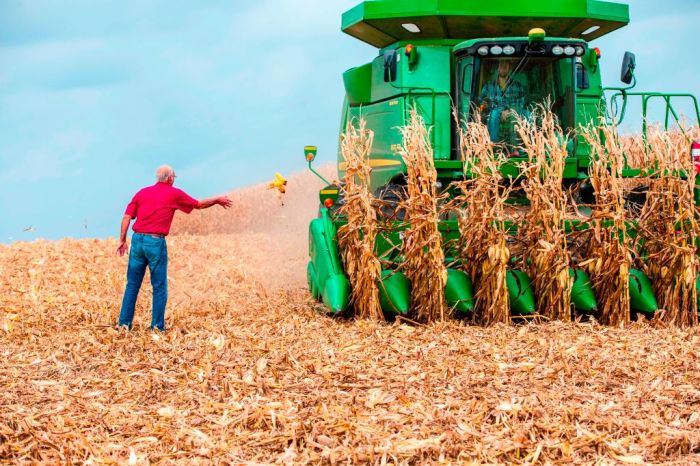
The agricultural trade landscape is in constant flux, shaped by evolving global dynamics. Trade wars, technological advancements, and shifting consumer preferences are all factors that will continue to influence agricultural markets. Predicting the future is challenging, but by analyzing current trends and potential scenarios, we can gain insights into the likely trajectories of agricultural trade in the coming years.
Potential Impacts of Agricultural Trade Wars
Future agricultural trade wars may manifest in various forms, from escalating tariffs to non-tariff barriers. These disputes could lead to reduced market access for farmers in certain regions, potentially impacting their profitability and livelihoods. The impact could be uneven, with some agricultural sectors and regions experiencing more significant disruptions than others. A key element to consider is the potential for retaliatory measures, which could further complicate trade relations and create a domino effect.
For example, a tariff imposed on soybeans by one country might trigger retaliatory tariffs on other agricultural exports from the targeted country, resulting in a wider ripple effect across global markets.
Consequences of Evolving Trade Policies
Evolving trade policies, including new agreements and revisions to existing ones, will significantly influence the global agricultural trade. For instance, the introduction of new free trade agreements or the renegotiation of existing ones could lead to reduced tariffs and increased trade volumes for certain agricultural products. Conversely, stricter regulations or import quotas could negatively impact the export prospects of some agricultural products.
For instance, if a country significantly increases its import restrictions on a specific agricultural product, domestic farmers may see an increase in demand and prices for the product, while producers in the exporting country could face reduced market access and profitability.
Technology’s Influence on Future Trade Disputes
Technological advancements, including precision agriculture and digital trade platforms, will influence how agricultural trade disputes unfold. These tools can improve the efficiency of agricultural production and trade. However, they can also potentially be used as instruments in trade disputes. For example, digital platforms can facilitate the collection and sharing of trade data, allowing governments to monitor and potentially retaliate against unfair trade practices.
Similarly, the use of data analytics can assist in identifying and targeting trade violations more efficiently.
Role of Consumer Preferences in Shaping Future Agricultural Trade
Consumer preferences play a crucial role in shaping the demand for agricultural products. As consumers become more aware of the environmental and social impact of food production, they may demand more sustainable and ethically produced agricultural goods. This shift in consumer preferences will influence the production and trade of specific agricultural products, potentially creating new markets and opportunities for farmers who prioritize sustainability and ethical practices.
For example, consumers’ growing preference for organic and locally sourced foods may lead to increased demand for these products, influencing the production and trade of organic agricultural products.
Potential for New Trade Agreements and Their Implications
New trade agreements will likely play a significant role in shaping the future of agricultural trade. These agreements can lead to reduced trade barriers, increased market access, and potentially higher agricultural exports. However, these agreements may also create challenges, such as the need for farmers to adapt to new market conditions and competition. For example, a new trade agreement could expose domestic farmers to increased competition from imported agricultural products, potentially leading to market adjustments and restructuring within the domestic agricultural sector.
Impact of Climate Change on Agricultural Trade and Tariffs
Climate change poses a significant threat to global agricultural production, impacting yields, and increasing the risk of extreme weather events. This could lead to higher food prices and potentially increased trade tensions. The impact of climate change will not be uniform across regions. Some regions may experience increased agricultural production, while others may face reduced yields and increased vulnerability to droughts or floods.
This variation in agricultural production could lead to shifts in global trade patterns and create the need for new agricultural trade agreements or tariff adjustments to mitigate the effects of climate change on global markets.
Last Word
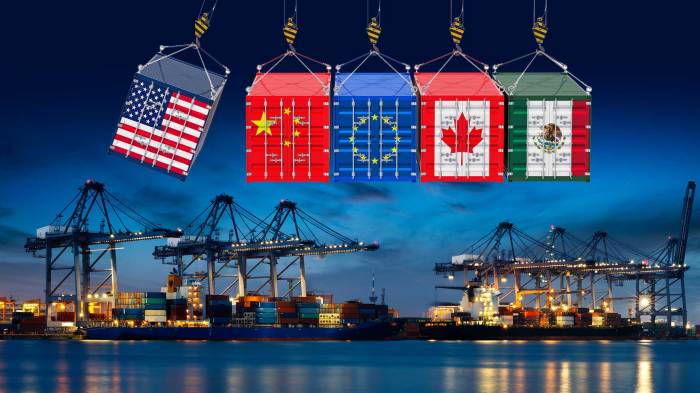
In conclusion, farmers trade war tariffs have created a complex web of challenges for farmers globally. The historical context underscores the cyclical nature of trade disputes, while the impacts on individual farmers and the broader global economy are undeniable. The future of agricultural trade hinges on finding sustainable solutions that balance global trade interests with the needs of farmers and consumers.
The intricate interplay of politics, economics, and technology in shaping the future of agricultural trade is evident.


